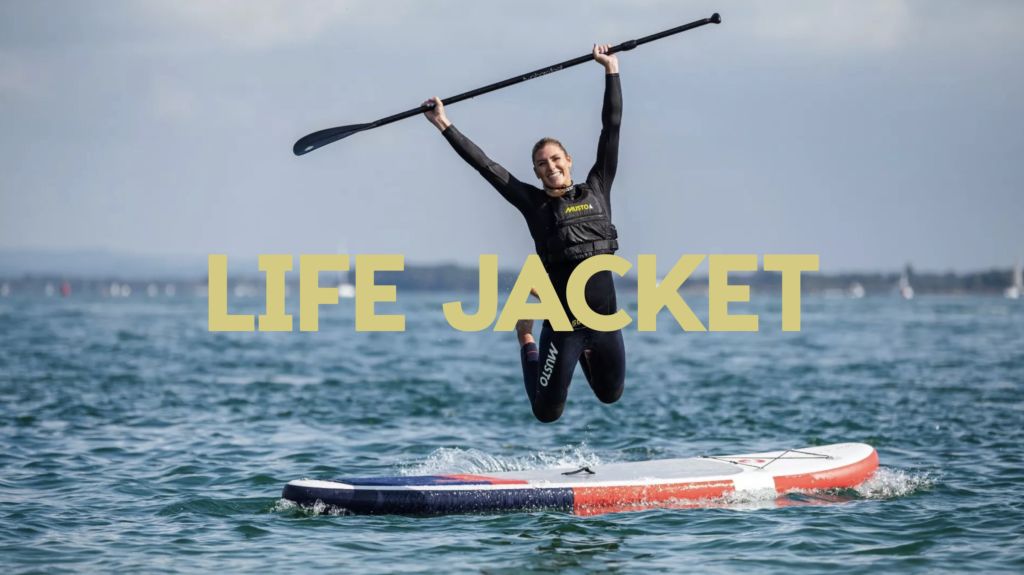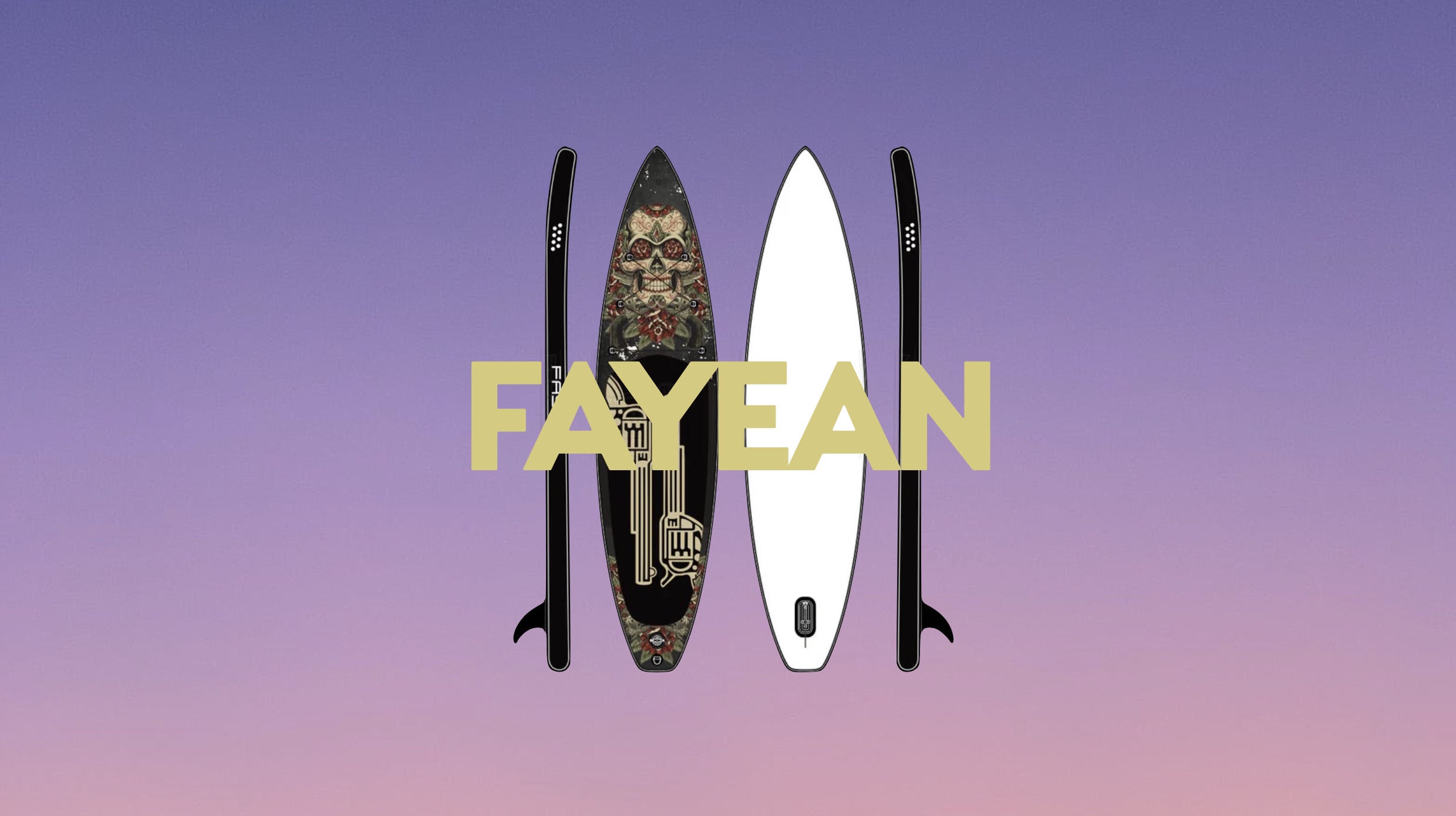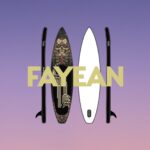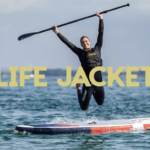
Life jackets for your SUP adventures are not always the sexiest accessories for your paddle boarding adventure, but they’re just as important as the paddle board itself. There are a lot of factors you’ll want to consider when choosing the best life jacket for your paddle boarding outing, which means that there are a lot of options on the market, and this can be overwhelming, especially if you’re starting out.
With a ton of options, the ” best life jacket ” will be very personal, so we’re going to help you take the guesswork out of choosing and discuss everything you need to know so your next purchase will be the right life jacket for you and we’ve even thrown in a few suggestions to make it even easier.
Why Do You Need Life Jackets For Paddle Boarding?
We can’t over-stress the importance of safety in sports, especially water sports, as you face a number of unique dangers when jumping in the water. A recent study published stated that, on average, they’re 3500 to 4000 fatal drownings per year in America. Another study shared that the majority of the drownings in America occurred at lake and river products, and of those drownings, 84% were not wearing a life jacket or life vest, these being the most popular locations for stand-up paddle boarding. Needless to say, when you choose to go out on the water without proper safety precautions such as your favorite life jacket or another type of personal flotation device, you increase your risk of injury, including death but no need to worry; we got you taken care of!
What is the difference Between A PFD And A Life Jacket?
A lot of people use these terms interchangeably, and even some experienced SUP boarders may not be able to give you a clear answer as they both keep you afloat in the water. The following are the main differences:
- Personal flotation devices or PFDs tend to be less bulky, therefore, considerably more comfortable; however, they don’t offer as much protection in the water as a traditional life jacket.
- A life jacket is typically designed with a large collar to ensure your face is always up when in the water, whereas the design and version of a personal floatation device will ensure you’re always afloat in the water but does not guarantee you’re facing up if you’re to take a spill.
- Personal flotation devices are either inflatable or standard ( already inflated ); however, a life jacket is always going to be standard.
- A life vest can be different from a life jacket, with the former being a buoyancy aid and the latter being a Type I pfd which is the maximum amount of protection. As we stated, these terms are often mixed up, so make sure you validate the type I life jacket or life vest you want when purchasing.
- A life jacket is a personal flotation device, but a personal flotation device is not always a life jacket.
Types Of PFDs
Let’s start with discussing the different types of PFDs or personal flotation device options, as there are different types that all serve different purposes.
Type I PFDs – U.S. Coast Guard PFD Classification – Off-Shore Life Jackets
The Type I PFDs are better suited for use in remote or rough waters, especially where rescue may not be prompt. Even though this type of PFD is usually bulky, they offer the highest level of buoyancy. What’s more, is that it can turn an unconscious person into a face-up position. It is worth mentioning that the type I PFD is the type that’s available on most commercial vessels. They are also available in inflatable or hybrid designs.
Type II PFDs – US Coast Guard PFD Classification – Near-Shore Buoyant Vests
This category is designed for calm inland waters, especially where rescue is faster. Unlike the Type I PFDs, the Type II PFD has a less bulky design. It is also not as expensive as the Type I PFD and less comfortable than the Type III PFD. The good thing about this category of PFD is that they can also turn unconscious users into a face-up position. Like the Type I PFD, they come in inflatable and hybrid designs.
Type III PFDs – US Coast Guard PFD Classification- Flotation Aids
Most paddlers prefer this type because they are ideal for areas with a higher chance of quick rescue. Unlike the other PFDs mentioned earlier, type III PFDs offer higher comfort and freedom of movement. What’s more, is that this is available for a continuous period of time. It is worth mentioning that this design is suitable for paddlers that can put themselves in the face-up position. Also, the paddlers would need to tilt their heads to help them avoid being face down.
Type IV PFDs U.S. Coast Guard PFD Classification – Throwable Devices
Type IV PFDs are designed to be thrown at a conscious person having difficulty in the water. They serve as a backup system for the other PFDs we’ve mentioned. Examples of these PFDs include buoyant cushions and rings. Another thing to note about these PFDs is that they are not ideal for use on SUPs, kayaks, and canoes.
Type V PFDs – Coast Guard PFD Classification – Special Use Devices
This type of PFDs is mainly regarded as a special-use device because they are primarily utilized in specific activities. For the USCG to accept this type of device, it is expected to be worn all the time. This type of PFDs can be used for a variety of activities. This includes windsurfing, waterskiing, recreational paddling, kayaking, and deck suits. Like all the other categories mentioned above, the type V PFDs come in inflatable or hybrid designs.
What Types of PFDs Are Best Suited For Stand Up Paddle Boards?
This is something of a personal preference; however, in most situations, you’ll want a type iii or type v pfd for a good balance of protection, comfort, and maneuverability. however, if you’re in the market for a new life jacket or sup PFD, we suggest you think about the following points:
- Are you a strong swimmer? If the answer is no, then you may want to think about a traditional life jacket or Type 1 life jacket, as it will ensure you have the maximum amount of protection by ensuring that if an incident does occur, you will always be face up above the water however the downside is that it is not comfortable for a long period of time and can get hot quickly.
- What are the conditions you’re paddling in? If you’re dealing with large waves or your surroundings are rocky, then you may again choose a standard life jacket or a Type I personal flotation device; however, if you’re in ideal conditions, it’s hot out, and you’ll be doing a lot of paddling a Type iii, or type V PFD may be a better option.
- Are you alone or with friends? Having a few buddies around while paddle boarding means you have support in a precarious situation. If you have friends around and you’re feeling good about the conditions, then a type III PFD or Type V can be a great choice as it has a lightweight design which means it’s comfortable for several-hour outings.
- What type of SUP activity are you enjoying? There are a lot of ways to enjoy a SUP board, including touring, yoga, racing, surfing, and just relaxing, so as you can imagine, you may want a different life jacket depending on the activity and the amount of movement you may need for example, it may be difficult to perform a yoga move in a standard life jacket so you may opt for a type iii or type V flotation device instead.
- What are the local laws? Before jumping into the water, you’ll want to check out the local laws as they vary from state to state and regarding the type of activity you’ll be performing. For example, PFDs are not approved for the:
- Anyone under 16 years old.
- Anyone who weighs less than 36.6 kg or 80 lbs.
- Use on a personal watercraft.
- White water paddling activities.
Does Weight Matter For Life Jackets?
The short answer is yes. Different life jackets and PFDs have varying degrees of buoyancy; however, the general rule is that the average adult only needs an additional 7-12 lbs of buoyancy to keep their head above the water. Other factors, such as body weight, muscle mass, fat percentage, lung size, water conditions, etc., can impact your choice.
Generally, only about 5% of your body weight is a solid mass, and the rest is made up of water and fat, which is lighter than water, so a 180lb person would only need about 9lbs of buoyancy which is nearly all life jackets and personal flotation devices support. The simple math is .05 * your weight = minimum buoyancy needed.
How Does A Belt Pack Life Jacket Work?
A belt pack life jacket or belt pfd is an inflatable PFD that is typically manually inflated by the user. As the name suggests, it is worn around the waist with the inflatable component facing forward so that when it inflates, it keeps your face upright towards the sky so that you’re well protected until help arrives. Most belt PFDs use a CO2 cartridge to inflate the bladder, so if you end up using it, remember to replace the cartridge.
Design: What Are The Type Of Designs, And Are They Comfortable Life Jackets?
Comfort is highly subjective and can vary depending on the environment and what you’ll be doing. When selecting a comfortable life jacket for paddle boarding, you’ll want to think about how long you’ll be out on the water, how hot it will be, and the type of activity you’ll be performing.
Foam Vest
Foam vests are great because you’re always protected, and they often provide safety even when a person is unconscious. They’re typically constructed with a foam filling and can be used in multiple settings, such as boating or stand-up paddle boarding. The downside is they tend to be a bit bulky, which means they may not be good for hot days or strenuous activities as they may chafe.
Waist Belt Type V Floatation Device
A waist belt or inflatable belt PFD is by far the most comfortable life jacket for paddle boarding in our opinion, as it’s worn around your waist vs. over your shoulder so you get the maximum amount of movement while still being protected.
Suspender Harness
Another option for comfort is a PFD suspender harness which rests around your shoulders and has open arms. This is a great option for comfort and protection as it’s midway between a life jacket and inflatable belts; however, if you’re paddle boarding for long periods, it may not be the best option as it can cause a bit of irritation around the shoulders. What we do love type these is that they tend to come with a waterproof pocket for your phone or other small accessories
Can Inflatable Life Jackets Be Reused?
Most inflatable pads and life jackets use a CO2 cartridge, so in the chance something occurred and you had to use it or accidentally used it, you can most likely repack the bladder and purchase a new CO2 cartridge.
What PFD Do I Wear When On The Ocean?
This was briefly mentioned before; however, this largely depends on the conditions of the water and if you’re a strong swimmer. If you’re stand up paddle board surfing, you may want to opt for better protection with maximum flexibility as you’ll be battling waves and potentially around other surfers.
We personally love the Type iii pfd for this reason, but again, the first priority is always safety so if you’re inexperienced or not comfortable in the water quite yet, choose a life jacket that will ensure you’re face is always facing up in the water such like the type i pfd.
Some Of Our Favorite Life Jackets for Paddle Boarding
Up to this point, we’ve discussed what to look for when selecting a PFD; however, we’ve not yet discussed our favorites. Again, there is a lot to consider, which we’ve discussed; however, we do have a few suggestions to simplify your choice.
Best Inflatable PFD Belt pack – NRS Zephyr Inflatable PFD Belt Pack & Suspender
The first on our list is the NRS Zephyr Inflatable PFD. Although you initially see a normal-looking belt pack, there is more than meets the eye with the Zephyr. As we’ve discussed, most belts’ bladder will inflate at the hip, and although you are well supported with these types of belts, NRS decided to take it a step further by adding a strap that will slide over your head so that when inflated your neck and shoulders are also supported which is great if you’re not a confident swimmer or may need a little more support than others.
Best Inflatable Life Vest – Onyx MoveVent Dynamic Paddle Sports CGA Life Vest
As the name implies, this vest has been designed with movement in mind while using high quality nylon and mesh panels to ensure the vest is as durable as it is comfortable on and off the water. The vest has strategically placed vents so that even on hot days, this life vest will keep you as cool as you are protected. Aside from the obvious accoutrements such as it being lightweight, highly reflective accents and pockets for storage, we think what really lands this jacket is how light and comfortable it is, which makes for greatly extended use for several types of activities.
Lightest Inflatable Belt PFD Life Jacket – The Onyx M-16 Belt Pack
We love this belt pack for an easy day out on the water for many reasons. Firstly it’s affordable, coming in at 75 USD at Amazon, which is great as we’ve already spent a lot of money on our paddle board and other accessories, so saving money is never bad. We also love this SUP PFD as its extremely low profile makes it a comfortable PFD, so it’s not cumbersome while paddling or getting a quick yoga session in. If these weren’t good enough reasons, it also has a great buoyancy rating of 17lbs which means it can potentially support someone who weighs up to 335lbs which is a lot for a paddle board pfd belt pack.
Conclusion
Choosing a Paddle Boarding Life Jacket can be confusing and a bit overwhelming if you’re new to water sports or stand-up paddle boarding; however, the short of it is a type iii or type V flotation device that is highly recommended for their balance of function, comfort, and protection. Again, we recommend you doing the research, finding one that is coast guard approved as well as finding one that will fit your chest size & body type. Whether you are a beginner paddle boarders or a seasoned pro, we definitely recommend wearing one!
If you want a more in-depth analysis of the best life jackets, we have you covered here!



